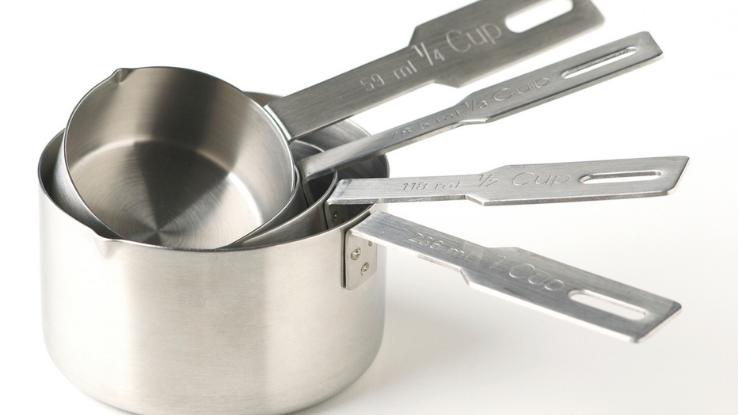What Does 6 Ounces Equal in Cups?

Six fluid ounces is equivalent to 0.75 or 3/4 of a cup. There are 8 fluid ounces in a cup.
To determine how many cups you have, you’ll divide your number of ounces by eight. In this example, six divided by eight yields the previous answer of 0.75.
Converting Tablespoons to Cups
A tablespoon is another unit that you can use when measuring ingredients. There are 16 tablespoons in 1 cup. To convert tablespoons to cups, divide your number of tablespoons by 16. If you have 4 tablespoons, dividing by 16 yields an answer of 0.25 or 1/4 of a cup.
Converting Tablespoons to Ounces
One fluid ounce is equal to 2 tablespoons. You can convert tablespoons to ounces by dividing your number of tablespoons by two. Assume you need to convert 8 tablespoons to ounces. Simply divide eight by two. The final answer is 4 ounces.
Converting Teaspoons to Ounces
Teaspoons are an even smaller unit of measurement that you might need to convert to ounces. There are 6 teaspoons in a fluid ounce. You will divide your number of teaspoons by six to calculate how many ounces you have. If you have 12 teaspoons of a liquid, you have 2 ounces.
Converting Teaspoons to Cups
One cup has 48 teaspoons. Convert teaspoons to cups by dividing by 48. For example, if you have 192 teaspoons, you can divide by 48 to determine that it’s equal to 4 cups.
Reasons to Convert Ounces (and Other Units) to Cups
There are multiple reasons you might want to convert ounces or other smaller units to cups. One instance is when you’re tracking your liquid consumption. Maybe you want to drink 80 ounces of water each day and want to know how many 8-ounce cups you’ll need to drink. When you do the math, you learn that you must drink 10 cups to satisfy your goal.
Cooking, baking and preparing food are other common instances where you may need to convert ounces to cups. Conversions might be necessary if you need to use a different measuring tool or if you want to change the final yield of a recipe.
Assume that you have a recipe that calls for 4 ounces of milk. To triple this recipe, you need 12 ounces of milk. To determine what measuring tool to use and the appropriate size, you divide 12 by eight to determine that you need 1.5 cups of milk (and should use a measuring cup that can accommodate at least this much liquid).
Ounces Versus Fluid Ounces
The guideline that 8 ounces equals 1 cup is only relevant to fluid ounces. There is another type of ounce that is used for measuring mass. A fluid ounce is a unit of measurement that measures volume; it indicates how much space a substance takes up. It doesn’t indicate how much the item weighs. Note that all of the previous examples are converting to fluid ounces, not ounces used for measuring mass.
Since 8 ounces of water is equivalent to 8 fluid ounces of water, some people assume this is the same for all substances. However, water is the exception, not the rule. A fluid ounce isn’t always equal to an ounce used for measuring mass.
If you measure 1 cup of flour using a measuring cup and then weigh it, you’ll find that the 8 fluid ounces of flour measures a different number of ounces for its mass.
Both liquids and dry ingredients may be measured in fluid ounces or cups. Just make sure that the recipe you’re following is providing its measurements in fluid ounces rather than ounces used for mass.





